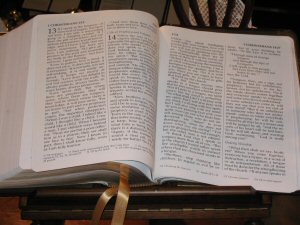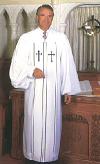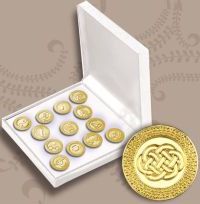Weddings in Philippines

The Philippines has fabulous customs, especially when it comes to weddings, using a mix of earlier Filipino traditions and later Latin customs introduced by their colonial masters. The weddings reflect the strong traditions of family - and extended family. Therefore Filipino wedding ceremonies typically involve many people and the wedding rituals 'speak' to the couple personally.
A Philippine wedding ceremony
Most Christians here are Roman Catholic and the Church follows a standard set of guidelines and vows for wedding ceremonies, though there are some variations depending on the specific parish, diocese, or region. The essential vows, however, remain consistent with the Catholic wedding ritual as outlined by the Church. Here’s a breakdown:
Essential elements of Catholic wedding vows:
- Exchange of Consent (vows):
- The core of the Catholic wedding ceremony is the exchange of vows. The couple promises to be faithful to each other in good times and bad, in sickness and health, for richer or poorer, and to remain united in marriage for life. This is typically a set formula used during the ceremony:
Traditional Catholic vows:- Groom: "I, [Name], take you, [Name], to be my wife, to have and to hold, from this day forward, for better, for worse, for richer, for poorer, in sickness and in health, to love and to cherish, until death do us part."
- Bride: "I, [Name], take you, [Name], to be my husband, to have and to hold, from this day forward, for better, for worse, for richer, for poorer, in sickness and in health, to love and to cherish, until death do us part."
- Consent is key:
- In Catholic marriage, the couple must give their consent freely, and this is an essential part of the ceremony. The priest will ask each partner if they come freely and without reservation to marry. This reflects the Church’s teaching on mutual consent being a foundational element of a valid marriage.
- Blessing and sacrament:
- The priest, acting in the person of Christ, blesses the couple, and the marriage becomes a sacrament. The couple’s vows are considered an act of faith before God.
- Possible personalization:
- While the vows are typically standardized, couples may add personalized elements (such as a special reading or music), but the official vows must adhere to the Church’s prescribed form. The priest must approve any variations in advance.
Marriage preparation:
Before the ceremony, couples are required to undergo marriage preparation programs. This can include:- Pre-Cana counselling: A program designed to prepare couples for the sacrament of marriage, discussing topics like faith, family life, finances, communication, and intimacy.
- Documents: Couples must submit certain documents such as baptismal certificates, and a marriage license obtained from the local government.
Wedding Mass:
- In the Philippines, Catholic weddings are often celebrated as part of a full Mass. The ceremony includes the usual Mass liturgy, but with the addition of the exchange of vows and rings. In this context, the vows are still a significant part of the ceremony.
Cultural influence:
- While the Roman Catholic ceremony itself is standardized, Filipino weddings may include cultural traditions like the "veil and cord" (which symbolizes unity and fidelity), "arrhae" (13 gold coins, representing wealth and prosperity), and processions with extended family. However, these cultural elements are seen as supplementary to the core Catholic ritual.
The rest of this page built around the true story of James and Nila, who married in Philippines and then had a Filipino wedding (Kasalan) in America.
Each part of the story links to a separate page which includes the script used by the pastor and the couple for their ceremony in America.
James is American and Nila is Filipina. They were married in a Civil Ceremony at the Pasig City Court House, Manila, Philippines, on 4 July 2007. Here are photos Jim sent us from around that time:
Click any photo
to enlarge →
The participants
Guests at any wedding are often considered to be little more than spectators, but actually they are much more significant than that; they are the witnesses to a very special occasion. In James and Nila's case, because of the modest size of the venue and the distances involved, it was not possible for all their family members and friends to attend. This meant those who did attend had an even more important role to play in the ceremony.
And beyond.
Like god-parents at a baptism, the role of the attendants continues throughout the married life of the couple, helping and guiding.
The principal attendants are known as 'sponsors'; male sponsors are ninongs and female sponsors are ninangs. In Philippines, the number of sponsors can be just one couple or perhaps as many as two dozen. They are women and men whom the bride and groom respect and admire, perhaps aunts and uncles or close friends of the family. As in the early days of the Church, the sponsors attest to the couple's readiness for marriage and freedom to marry. In Philippines, they are also the official State witnesses and sign the marriage licence. Worldwide, their participation is symbolic of the wisdom and support they will offer the new couple.
The Principal sponsors are part of the bridal procession. At the nuptial blessing, they may also be invited to approach the pastor and extend their right hands to join in the prayer of blessing. In doing so, they are fulfilling their roles as sponsors. The Secondary Sponsors are women and men whom the couple choose to involve in their ceremony because of their affinity or friendship. They are typically relatives or close friends.
The Principal Sponsors are the Coin Bearers, Veil Sponsors, Cord Sponsors, and Candle Lighters. For James and Nila's wedding, these tasks were undertaken by Stephen Griffith Earnhardt as Principal Sponsor & Best Man, and Karmen Slater Earnhardt as Principal Sponsor & Matron of Honour. Both Stephen and Karmen are from Jim's side of the family. The Coin Bearer and Ring Bearer was Stephen Tyler. The Candle Lighters were Ben and Shell.
Attire

Baro-ng Tagalog
Brides in Philippines usually wear a white dress, similar to those seen in the West. Nila took one from Philippines for her wedding and also wore a white orchid in her hair. Grooms and other male guests usually wear a traditional white Baro ng Tagalog with black trousers. The baro is a thin silky embroidered shirt which is worn over a white tee-shirt. James wore a white jussi Barong Tagalog embroidered with black thread, plus a special black tie with a pearl pin, and a black & white beaded necklace, black trousers and black shoes.
Music
James and Nila chose the following music and songs for their wedding:
- Elsa's Wedding Procession to the Chapel from 'Lohengrin' by Richard Wagner
- Ebb Tide Original version sung by Bobby Hatfield of the Righteous Brothers
- Unchained Melody Original version sung by Bobby Hatfield of the Righteous Brothers
- Lady Written by Lionel Ritchie, sung by Kenny Rodgers
All wonderful songs of course, but Western. Since James and Nila are a marriage of East and West, they included several Eastern elements. Filipino weddings have some beautiful traditions that James and Nila incorporated into their wedding, including coins, rope and candles. (Props for a conjuring trick? Read on...)
Bible Reading
Having decided on a poetic version of a Bible passage, all was now set for the start of the Ceremony.
The Ceremony
The Couple enter the chapel with the Sponsors and the Pastor announces the start of the wedding.
Blessing of the Arrhae (Arras)
The coins are blessed and exchanged.
Prayers for Couple's Veil
Veil Sponsors place a white veil over the bride's head and the groom's shoulders. The pastor explains the importance of the veil and offers a prayer.
Prayers for Couple's Cord
Cord Sponsors drape a yugal in a figure-eight shape over the couple's shoulders, rather like a lasso but with the reverence given to a rosary. The figure-eight is like the infinity symbol, meaning everlasting love.
Wedding Vows and Wedding Ring Ceremony
It is difficult to imagine a more important part of the wedding than this.
Prayers for Candles
Candles are more than just lovely ornaments; they add a bright and warm ambience to any situation. Whether scented with incense or packed with dust to emit sparks when lit, candles are alive.
Benediction
The final blessing of the couple and the congregation.
Marriage Pronouncement, Wedding Kiss, and Recession
A contractual kiss. What better way is there to end the ceremony!
For your convenience, the whole script is also available in  pdf format.
pdf format.
Jim and Nila have kindly provided some additional notes about the legal requirements and procedures involved, plus their own experience of a Western-style wedding in Philippines. This is also in  pdf format.
pdf format.
See also our footnote on intercultural marriages
























































